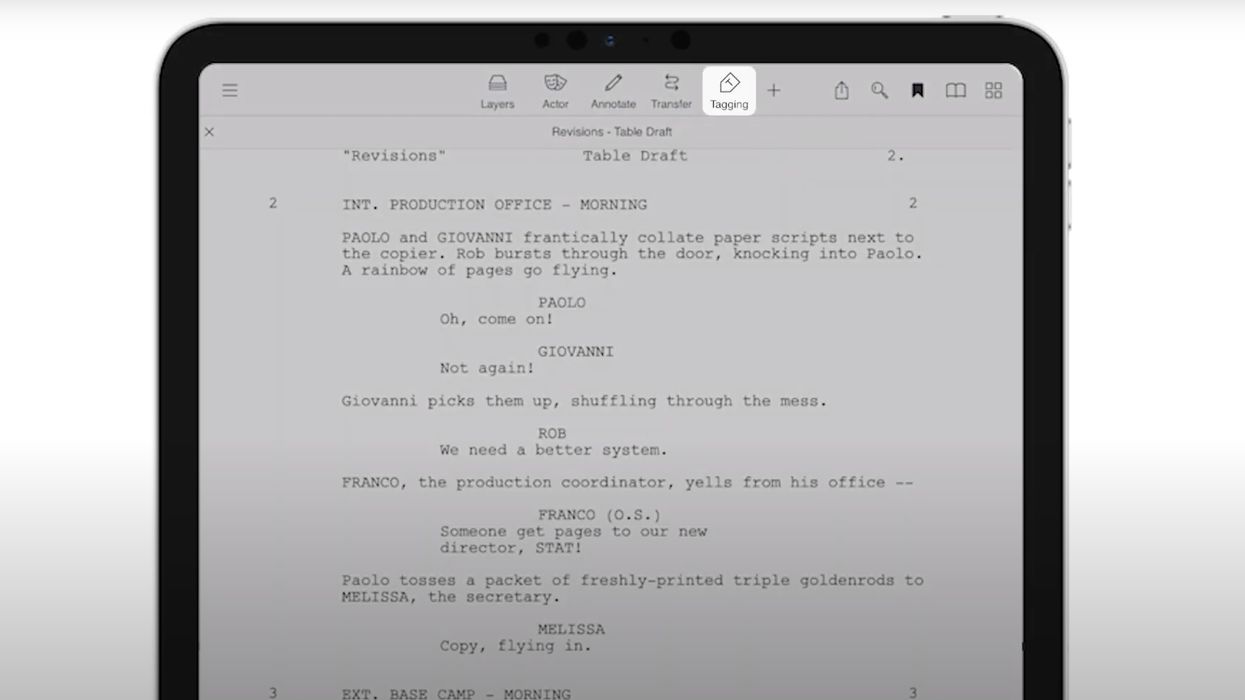Scriptation's New Feature Makes It a Must for Productions
With the new Tagging feature, Scriptation makes your production more efficient, saving you time and money.

Script markup tool Scriptation keeps rolling out new features to make it more helpful to filmmakers and teams, trying to keep information flowing throughout a production. With its new tagging features, Scriptation will make it faster and easier to prep your show and ensure everything you need is there when you show up on set.
Before we get into the new tagging feature, let’s talk quickly about why you should be using Scriptation regardless. A script is an industrial document; it’s not intended to be read widely by the public but is written a specific way to be used as a blueprint for shooting.
Here's everything you need to know and why it should be a part of your workflow.
Project Prep Gets Easier with More Info
A script is a blueprint, and that blueprint traditionally gets heavily marked up by the production team to help them through the shooting process.
A director will go through and break down each scene into individual beats for working with actors, with notes for intention and adjustments for each beat. Then you’ll go through and mark up your script for collaborating with the DP, with notes for lenses, coverage ideas, and even special equipment requests.

Scriptation
Layers on Layers on Layers
These layers of notes can get incredibly messy. Even worse, when a new draft comes in, you need to move all your notes to a new draft.
This is where Scriptation makes your life easier.
First, it lets you organize your notes into layers, so you can have a “performance” layer and a “cinematography” layer that you turn on or off, depending on who you are talking with.
Even better, Scriptation was designed by filmmakers, meaning they know that new pages are coming, and there is a sophisticated toolset to move your notes onto new drafts as they come in.

Scriptation
Now with the Power of Tags
Tagging is the latest set of features to roll out with Scriptation and allows filmmakers to tag every element in a project as a way to flag them for each team member that needs to be in the know.
For instance, you can tag a scene for “intimacy,” which frequently requires hiring an intimacy coordinator.
Properly tag the script once, and you can generate a report that will help production know precisely what days you will need a coordinator on set so you don’t run into a situation where you need one and none were hired that day.

Scriptation
Reports Make It All Better
The feature comes with a preloaded list of common tags, including items like locations, animals, and other issues that filmmakers frequently need to wrangle.
It’s fully customizable too, allowing users to add their own individual tags or change the tag colors.
It can even auto-tag dialogue for characters which can help generate sides for your actors to prepare. It also generates useful reports for handing to collaborators to help information flow quickly and efficiently and ensure everything needed is there on the day.

Scriptation
Scriptation is available under a subscription model, which starts at $12.99 a month and goes up to $16.49 a month per device. Beyond that, there are enterprise solutions as well.
This makes it a great thing to start during a production, even one on a budget, and then stop the subscription when you're done or on hiatus.
It feels like productions have been running on pen and paper for ages, and it's great to see tech solutions popping up that make things more efficient. That saves you time and money on set, which we all know can make or break a production.













